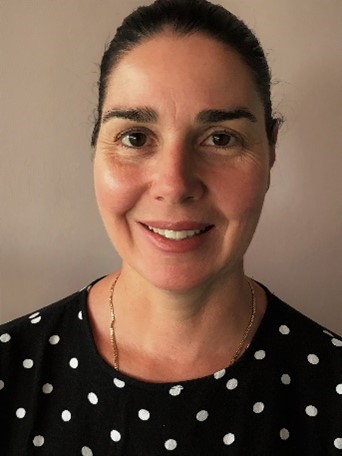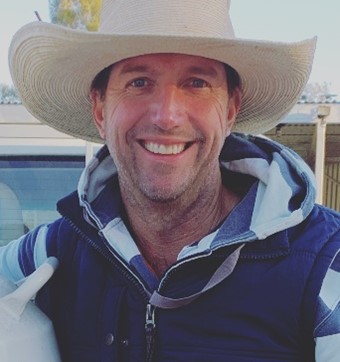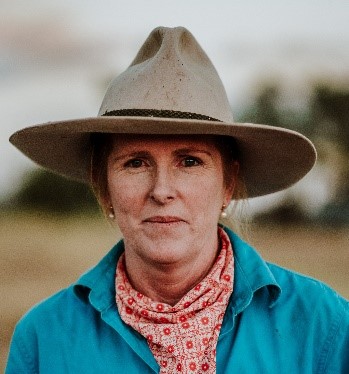GRASS – A truly green solution
Welcome to Turf ‘n’ Surf, a podcast that tells stories in Queensland’s farming, fishing, biosecurity and forestry sectors.
Having lots of land isn’t much good if you’re a farmer and your land is in poor condition.
Years of use and the difficulties of managing land in a highly variable climate can leave previously good, productive land badly degraded and unsuitable for its intended use.
Poor and degraded land may also have considerable impacts on other fragile ecosystems such as Queensland’s world-famous Great Barrier Reef.
Rehabilitating poor quality land is no easy task and often requires considerable resources.
In this episode of Turf’n’Surf, we’ll look at a Queensland Government initiative that is assisting graziers improve the condition of poor and degraded land in Great Barrier Reef catchment areas.
It’s the land rehabilitation program delivering real benefits by watching the grass grow.
Meet our guests
TRANSCRIPT
Program intro: Welcome to Turf’n’Surf, powered by Queensland’s Department of Agriculture and Fisheries. Shaping and protecting food and fibre for tomorrow’s Queensland.
Host: In Cole Porter’s famous song, he asks to be given ‘land, lots of land’.
But having lots of land isn’t much good if you’re a farmer and your land is in poor condition.
Years of use and the difficulties of managing land in a highly variable climate can leave previously good, productive land badly degraded and unsuitable for its intended use.
Poor and degraded land may also have considerable impacts on other fragile ecosystems such as Queensland’s world-famous Great Barrier Reef.
Rehabilitating poor and degraded land is no easy task, and often requires considerable resources.
It needs to be done properly to achieve the desired result of restoring land to a productive condition or simultaneously reducing the impact on fragile ecosystems.
So how do you go about achieving those goals?
I’m Brad Muir. In this episode of Turf’n’ Surf, we will look at a Queensland government initiative that is assisting graziers improve the condition of poor and degraded land in Great Barrier Reef catchment areas.
It’s the land rehabilitation program delivering real benefits by watching the grass grow.
Program segue: You’re listening to Turf’n’Surf, the official podcast of Queensland’s Department of Agriculture and Fisheries. Shaping and protecting food and fibre for tomorrow’s Queensland.
Host: Melanie Leather has been in the beef industry for more than 30 years, and is a passionate advocate for the Australian beef industry, particularly around sustainability and biosecurity issues.
Melanie and her family run a successful, natural pasture fed beef operation in central Queensland. They run about 4500 head of cattle across their three properties, which cover an area of 17,600 hectares, targeting the organic, EU and grasslands markets.
In 2020 when they discovered an area of their land was badly degraded, they took immediate action.
Thanks for joining us Melanie. Tell us about the problem on your property, how large an area of land was affected, and how did it come to be in such poor condition?
Melinee: Yeah, sure, thanks. So Barfield has deep, black, cracking clay soils that can be very delicate if they’re not managed well.
And so, we have a section of gully with a catchment of around 60 hectares that has numerous gully heads across a broad drainage line. And when we get run off rain the erosion is quite evident.
So, when we looked at the historical ground cover mapping of this area, it indicated heavy grazing over a prolonged period. So, we had to prioritise reducing the amount of run off so we could get control of the erosion.
Host: So, what impact did having that land unavailable to you have on your business?
Melinee: Well any area of the erosion are always a concern and we did not want to see that water running off our land and taking valuable topsoil with it.
So, for a healthy soil and ecosystem, we need that water to soak in. And there is definitely an impact of productivity if our soils and environment aren’t in good condition.
So, productivity and profitability go hand in hand with sustainability. And if we can leave our country in better condition then we can ensure the long-term viability of our environment and our family business.
Host: Melanie, you’ve been involved in the Queensland Government’s Grazing Resilience And Sustainable Solutions, or GRASS program, since July 2020.
How did you find out about the GRASS program and why did it appeal to you?
Melinee: Well we were initially involved with a program called Grazing BMP that ceased operation in 2019 and, as an accredited producer of that program, we were notified in November 2019 of the GRASS program by our local NRM group and DAF.
And we were really enthusiastic to be part of this, as we had already seen the benefits being in Grazing BMP.
These programs allow us to benchmark and recognise areas for improvement and then they give us the tools and support for us to make practice change that improves not only our environment, but also our economic viability.
Host: So, how has the program helped you to rehabilitate the land?
Melinee: Well, we’ve received a lot of on ground support from DAF staff.
We’ve also been able to access experts in the field, as well as get technical and planning support. So, the program’s been excellent for us.
Host: The program is very much a partnership between yourselves, DAF and the local NRM groups, what have you had to do to make the program work for you?
Melinee: Well really all we’ve had to do is just embrace it. I mean the staff at DAF have made the process easy.
During our time in business, we’ve found that the more we can work together with people like DAF, NRM groups and industry organisations, the more opportunities and knowledge we have to continually improve our business and land management skills.
Host: That sounds like a pretty simple win, win all round Melanie. What advice do you have for other producers who also face land degradation issues?
Melinee: Well, you know sometimes it can feel overwhelming. You often aren’t sure where or how to make a start and climatic conditions and financial pressure just exacerbates the problem.
So, I would say get in touch with someone from DAF, and they will help you form a plan to work your way through it and, like I said earlier, they will also give you on ground and technical support to make that plan work.
Program segue: This Turf’n’Surf podcast is powered by Queensland’s Department of Agriculture and Fisheries. Shaping and protecting food and fibre for tomorrow’s Queensland.
Host: On this episode of Turf’n’Surf, we’re looking at a Queensland government initiative, that is assisting graziers improve the condition of degraded land in Great Barrier Reef catchment areas.
Matt Brown is a beef extension officer with Queensland’s Department of Agriculture and Fisheries. Matt is based in Rockhampton and has worked for DAF since 2011. Part of Matt’s role is working with graziers involved in the GRASS program.
Thanks for joining us Matt. You’ve been involved with the program since it began. What are its fundamental elements?
Matt: The fundamental elements of the GRASS program is identifying areas of land that are in a poor and degraded state and coming up with actions to improve that land to make it more sustainable and profitable into the future.
Host: How many graziers have you worked with as part of this program, and what are some of the great results that you’ve seen?
Matt: Within the whole program across the three catchments, we would have worked with over 100 producers since the program began.
Some of the great results we have seen is gully remediation and, also, spreading our grazing pressure. So, making sure that cattle are utilising areas of land that have never been utilised before through the instillation of water and also the subdivision of paddocks with fences.
Basically, evening out grazing pressure within property to ensure that some areas aren’t getting hammered, and other areas are being utilised more effectively.
Host: You mentioned you’re working in three catchment areas, what are those areas and what are their significance to other parts of the ecosystem?
Matt: The three catchments that DAF works in within the GRASS program is the Burdekin, the Fitzroy and the Burnett Mary.
So we have teams located within those catchments that liaise with graziers on their needs and what needs to go in the action plan, management plan, for the GRASS program. The grazing property needs to work within the function of the ecosystem.
So it’s all about managing the grass to ensure the ground cover is healthy. By keeping that ground cover consistent, and keeping it growing, you’re keeping the soil healthy and of course that leads to a more healthy animal that is going to be putting on weight.
We’ve always worked within the business in DAF to ensure that the business is profitable and sustainable because if that doesn’t work then the whole program of GRASS isn’t going to work either.
So, it’s about taking a whole of business approach to ensure the business is going ahead because if the business is going ahead it’ll lead to a more sustainable property and therefore more sustainable ecosystem.
Host: And all of those catchments feed into the Great Barrier Reef, so there’s some really important outcomes associated with the program.
Matt: Yeah, it’s about minimising the amount of sediment that’s washing off properties into water courses and, therefore, having less impact on the Great Barrier Reef by sediment running into the reef.
Basically it’s about ground cover and the thing about the GRASS program is we don’t tell people how to manage their ground cover, we just assist them with their management techniques to try and improve their ground cover if need be, or manage a consistent level of ground cover within properties.
Host: So is the GRASS program better suited to certain types of land and soil or can anyone with a land degradation issue benefit from it?
Matt: Anybody can join. That’s the good thing about this GRASS program.
And also, it is not just about identifying areas of land that sit in poor and degraded condition. It’s about celebrating country that’s in really good condition and giving yourself a pat on the back, for getting our country in that position in the first place and maintaining that country.
So if you, if a producer has country that’s in really good condition, they’re more than welcome to come to the GRASS program as well and get acknowledgement for their efforts and the benefits of what they’re doing.
Host: So sharing those positive aspects are also a critical element of the program. What are some of the key elements for graziers to get the most out of the GRASS program?
Matt: The key elements of the GRASS program is identifying areas in their property that they’d like to improve on or, as I mentioned previously, acknowledgement of where they currently are, and identifying actions to either improve the country or maintain the country in its current state.
And you do that through an action management plan which is a document where the producer writes down specific actions for that specific land or the whole property. So examples could be the subdivision of paddocks, the installation of water points, fencing off riparian zones, gully remediation.
Also, by doing that the producers in three catchments, the Burdekin, the Fitzroy and the Burnett Mary can go on to a register of low risk for compliance in regards to the reef regs that are being implemented into those three catchments.
Program segue: You are listening to Turf’n’Surf, the official podcast of Queensland’s Department of Agriculture and Fisheries. Shaping and protecting food and fibre for tomorrow’s Queensland.
Host: On this episode of Turf’n’Surf, we’re looking at a Queensland Government initiative that is assisting graziers improve the condition of degraded land in Great Barrier Reef catchment areas.
Brigid Nelson is the Regional Manager, Beef and Sheep for the Queensland Department of Agriculture and Fisheries North Region. Brigid is based in Charters Towers, about 130 kilometres west of Townsville and was instrumental in developing the GRASS program.
Thanks for joining us Brigid. Tell us about the program. What was the inspiration for it? How did it evolve?
Brigid: Following the on-ground success and the relationships built with these producers during the Grazing BMP program, the Queensland Government wanted to continue to support these producers, wishing to improve the condition of their grazing lands and their beef businesses.
And the government also wanted to recognise the efforts of these producers who are making changes to improve both the condition and productivity of their property.
So, a program was developed to provide both the technical and financial support for these producers who have land in either poor or degraded condition, and who are wanting to do something about it.
And at the time of the program development, the reef protection regulation was nearing rollout within the highest priority risk catchment, that is the Burdekin, the Fitzroy and the Burnett Mary catchment.
So, with these factors in mind, a voluntary program to assist producers to operate within a regulated environment was needed.
Host: GRASS has been a very successful program. It is delivered in partnership with several other organisations. So, tell us about those partner organisations and what they bring to the table.
Brigid: So the program is funded and administered by the Department of Environmental Science, and it delivers via beef extension staff from the Department of Agriculture and Fisheries, in partnership with field staff from the North Queensland Dry Tropics, the Fitzroy Basin Association, and the Burnett Mary regional group.
So, we all work together on the development of action clamps for land management, and the administration of on-ground work consensus for these properties involved.
So, the program offers producers a property mapping package, technical advice for remediation, assistance to complete an action plan, assistance to source funding for work and practical information on all aspects of the beef business.
And having a large project team working in collaboration has strengthened the delivery of this program. And each organisation provides unique insight and diversity of approach.
Host: Brigid, do you think the GRASS program will, well, grow?
Brigid: Yes, well given the positive response from industry, the aim is to create an even better support package for graziers over a longer term.
We will get stuck into developing the program and make it even better for industry.
Host: GRASS is just one initiative that DAF has in place to assist producers. Give us a quick overview of some of the other programs.
Brigid: As DAF beef extension officers, we strive to build strong relationships with local graziers that produce the group network and we really do value grazier’s knowledge.
So we deliver locally relevant activities to demonstrate how businesses can become more profitable and productive, and that is supported by local evidence and the latest research findings.
And producers have access to specialist knowledge within the department. We provide one on one support for these businesses, and this covers all aspects of grazing land management, animal production and business management and we’re committed to providing the source of best practice information for the grazing industry.
We also have a large research and development program within the beef industry and most of these projects sites are located on family run beef property.
To name a few, we have a long-term grazing trial at the Wambiana Station, a live weight gain trial on leucaena at Pinnarendi Station and a range of pasture and negative trial sites across Queensland. We are also investigating the impact of Indian couch grass on production, and investigating the causes and treatment options for pasture dieback.
We also have a range of animal production research projects such as the repronomics project which is located at Spyglass Research Station in Brian Pastures Research Station in Queensland.
Host: So there’s a lot of work going on within DAF to assist producers. Where can producers find out more about those programs, and in particular the GRASS program?
Brigid: Producers can find out more about GRASS on the DAF website, daf.qld.gov.au, and Matt and the GRASS team and the beef extension team will be at Beef 21 at Rockhampton in May.
So, please drop in and say hi and you will find us in the Queensland government area in the Sydney Kidman Pavilion.
Program outro: You’ve been listening to Turf’n’Surf. Turf’n’Surf is produced by the Queensland Department of Agriculture and Fisheries. For more information or to subscribe, visit our website at daf.qld.gov.au.
* The grazing resilience and sustainable solutions, or GRASS, program is funded by the Queensland Government’s Reef Water Quality Program and delivered by the Department of Agriculture and Fisheries in conjunction with the three Natural Resource Management (NRM) groups – NQ Dry Tropics, Fitzroy Basin Association and the Burnett Mary Regional Group.
Graziers can apply to participate in the GRASS program by calling DAF on 13 25 23 or by contacting their local participating NRM group or extension officer.


